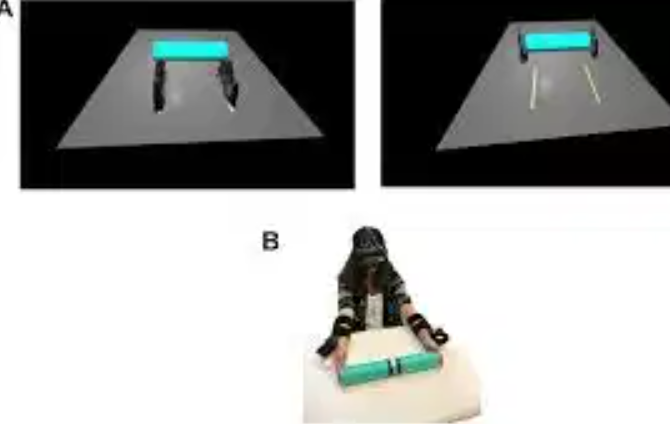Grasping trajectories in a virtual environment adhere to Weber’s law
PubDate: April 2018
Teams: Ben-Gurion University of the Negev
Writers: Aviad Ozana, Sigal Berman & Tzvi Ganel
PDF: Grasping trajectories in a virtual environment adhere to Weber’s law

Abstract
Virtual-reality and telerobotic devices simulate local motor control of virtual objects within computerized environments. Here, we explored grasping kinematics within a virtual environment and tested whether, as in normal 3D grasping, trajectories in the virtual environment are performed analytically, violating Weber’s law with respect to object’s size. Participants were asked to grasp a series of 2D objects using a haptic system, which projected their movements to a virtual space presented on a computer screen. The apparatus also provided object-specific haptic information upon “touching” the edges of the virtual targets. The results showed that grasping movements performed within the virtual environment did not produce the typical analytical trajectory pattern obtained during 3D grasping. Unlike as in 3D grasping, grasping trajectories in the virtual environment adhered to Weber’s law, which indicates relative resolution in size processing. In addition, the trajectory patterns differed from typical trajectories obtained during 3D grasping, with longer times to complete the movement, and with maximum grip apertures appearing relatively early in the movement. The results suggest that grasping movements within a virtual environment could differ from those performed in real space, and are subjected to irrelevant effects of perceptual information. Such atypical pattern of visuomotor control may be mediated by the lack of complete transparency between the interface and the virtual environment in terms of the provided visual and haptic feedback. Possible implications of the findings to movement control within robotic and virtual environments are further discussed.

